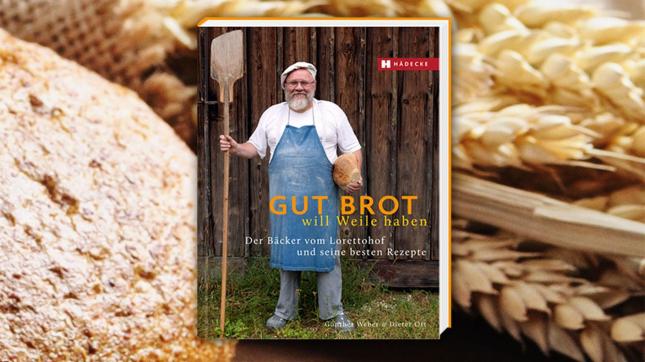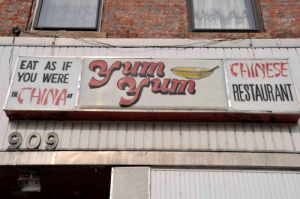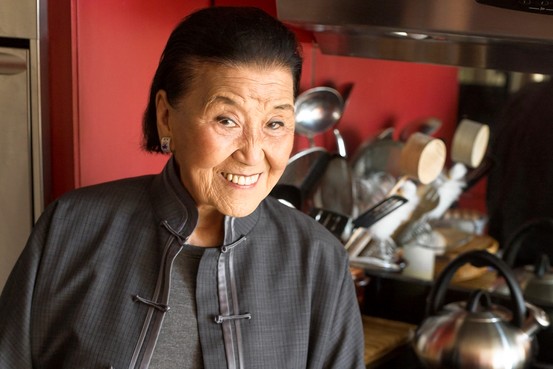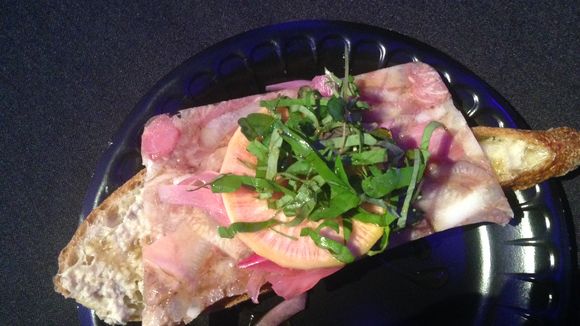
A recent Friday visit to Purple Poulet, a relatively new restaurant in Dayton, Kentucky sparked a debate over restaurant service gimmicks. Purple Poulet is an unexpectedly fantastic Low Country (South Carolina and Georgia) restaurant with the twist of Kentucky bourbon flavors. I think they are fantastic from design to taste. I had their salmon perloo (think of South Carolina version of jambalaya) and their Redneck Oysters Rockefeller (think the regular version with country ham and pimento cheese added ) – both of which were out of this world. The flavors were deep and intense and everything was executed perfectly.
The chef/owner of Purple Poulet used to chef at the revolving restaurant at the top of the Quality Inn in Covington Kentucky. He carried one of his service tricks with him. At the revolving restaurant they used to serve a small shot glass size of lemon sorbet as a palate cleanser in the early 80s. At Poulet, they served us a little shot of raspberry sorbet between app and entrée. I thought it was cool, unexpected and even practical. It certainly says, “Get ready for some intense flavors coming up. Here, take this, on us, to ready your palate for the excitement to come!”
But this brought discussion as to whether the palate cleansing sorbet is an out of date gimmick, inappropriate in today’s dining. Marketing success in America is certainly not dependent on restrained good taste. Some may think these gimmicks are akin to roadside attractions or car salesmanship. Do people really complain about being given something unexpected for free in the course of a meal?
The debate brought up other service tricks. Is the tableside mixed Caeser salad out of place and an unneccesary expense? What about any pyrotechnics like bananas flambee, cherries jubilee, desserts with sparklers, or flaming drinks like a Café Brulot? Should these have been left with the Kennedy administration when they were initiated? Also in this category are tableside fileting of whole fish like they do at Anchor OTR. How about table made guacamole or table carved roast beef?
We can thank Joe Baum for over-the-top tableside pyrotechnics in restaurants. He was the idea guy with Restaurant Concepts who created the $ 4 ½ million Four Seasons in NYC in 1959, and The Forum at Caesar’s in Las Vegas. With all the pomp and circumstance and ‘power dining’ aspect of the Four Seasons, they barely squeezed out a profit. It was the touristy, themed Italian restaurant, Mama Leone’s, that was the most profitable for Restaurant Associates.

Remember shortly after the 2008 recession how some Mexican restaurants started charging for the second or even first basket of previously free tortilla chips and salsa? What if all Cincinnati chili parlors started charging for the all-you-can eat bowls of oyster crackers. There’d be a chili revolution.
Who can forget the famous free relish tray at Shuller’s Wigwam on Hamilton Avenue, that came with dark rye bread and pickled herring? Is the free cotton candy at the end of the meal at Metrople downtown an unnecessary gimmick? We’ve evolved away from personalized matchbooks and cocktail stirrers, but that’s largely because of the nonsmoking requirements at most restaurants. But these were also good ways to strengthen your brand.
When I was a kid Frisch’s used to spike their children’s grilled cheese sandwiches with cool little plastic giraffes or monkeys. When they stopped using these, did the taste of their grilled cheese go downhill? Well, not necessarily, but it did send a message that some of the fun was taken away. The main reason for removing these was probably one of child choke safety and liability, but still, the adder was significant and remembered. It’s no surprise that the McDonald’s Happy Meal remains very popular today
Are these just spectacles that take away any reasonable appreciation of the food? Or is there value to these bringing comfort to those of us who remember them in their heyday. Have we evolved to a new level of dining where fresh, seasonal, and artisanal outweighs show and entertainment? That might be pretty boring. If we stripped everything dramatic or unexpected out of service, why wouldn’t we all just eat at home or go to a vending machine?
I think it really comes down to attitude and intent. If a server is rolling their eyes and looking around the room while mixing a Caesar salad, rather than being present, then the affect is certainly lost. But with presence and engagement, these service aspects make the diner feel special. They send a strong message that the staff views you, the diner, as more than just another customer to serve. And, it makes eating out just a bit more fun.


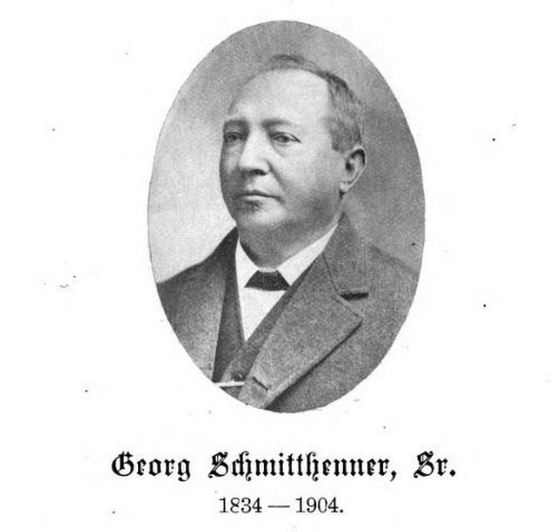

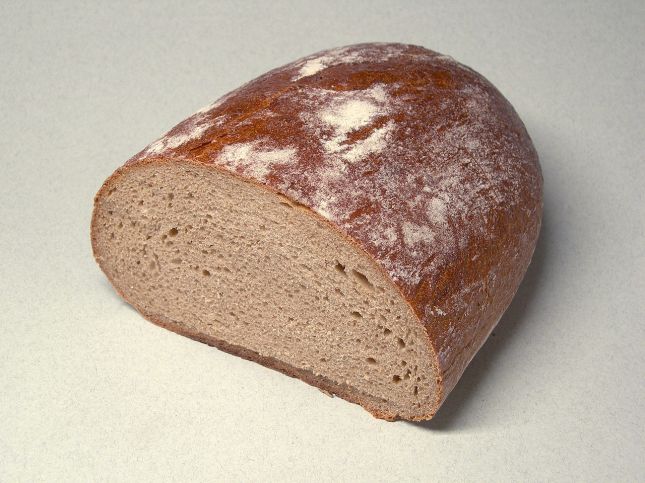
 Pfalzer Bauernbrot.
Pfalzer Bauernbrot.

